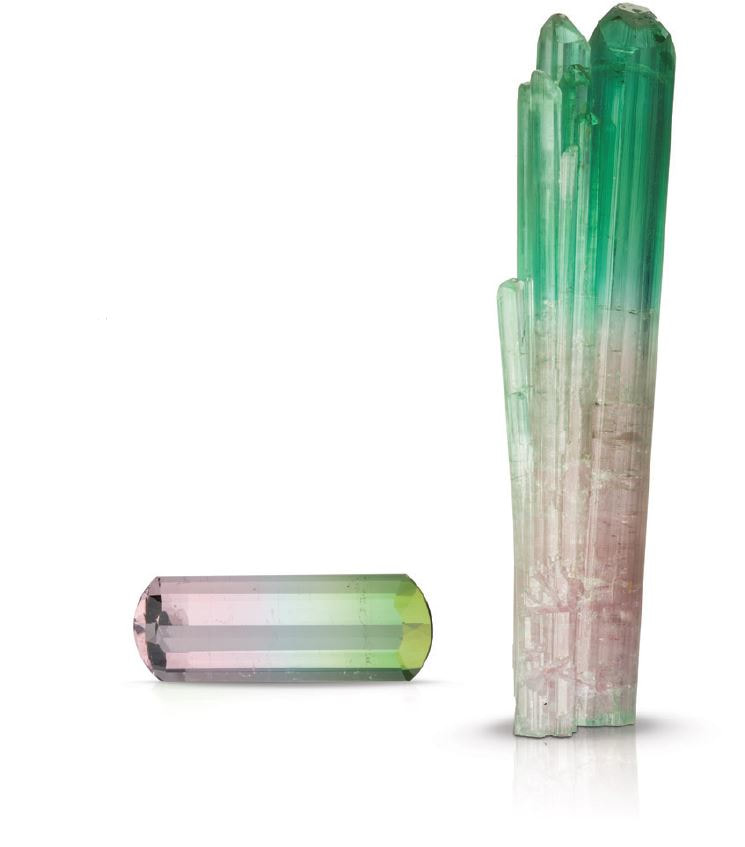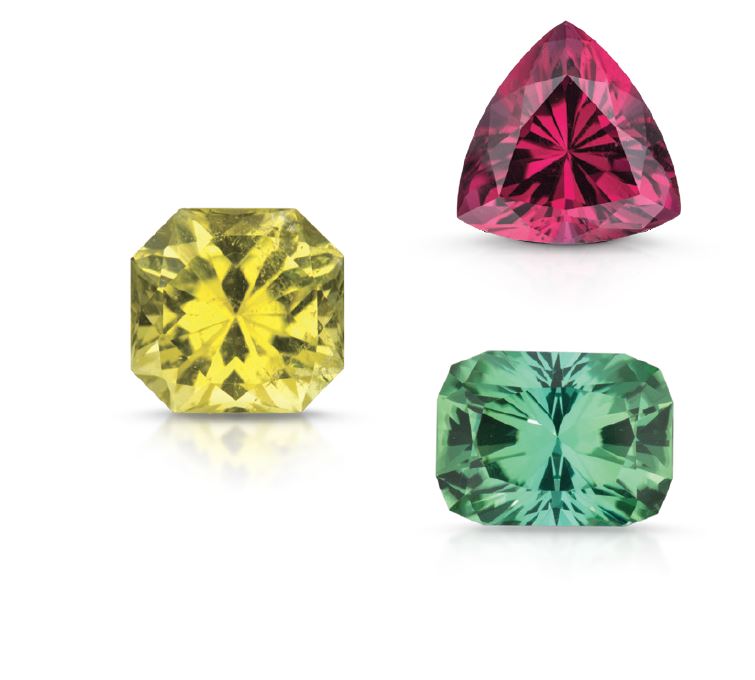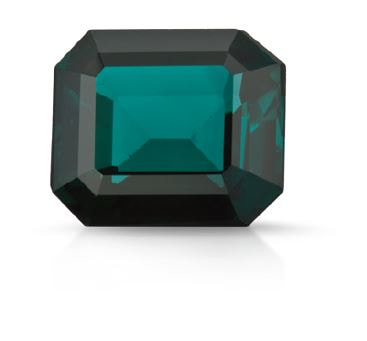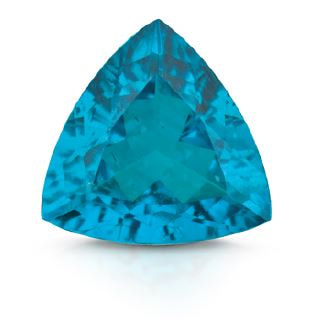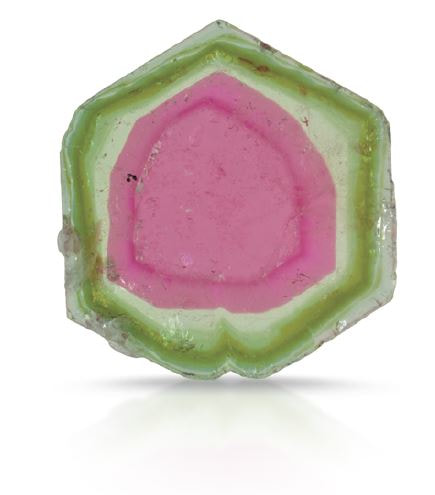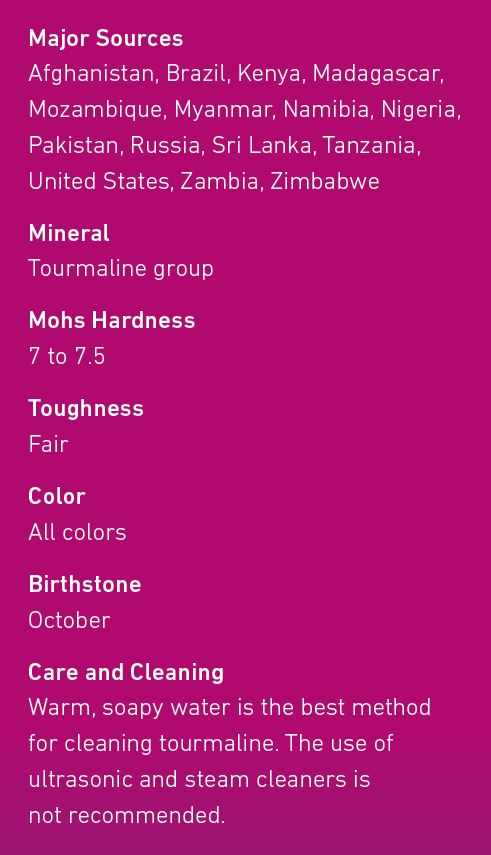TourmalineBelieved to encourage artistic intuition with the palette to express every mood. Egyptian legend has it that tourmaline gathered all
the colors while traveling along the rainbow, thus giving its name, which means “a gem of the rainbow.” The word tourmaline comes from the Sinhalese word “toramalli” meaning “stone with mixed colors” because it often has multiple colors in one crystal, sometimes in extraordinary patterns. Very few gems match tourmaline’s dazzling range of colors, which is why they were easily confused with other gems until the development of modern mineralogy. Color Tourmaline’s wide range of colors vary in intensity and
tone. Many tourmaline color varieties have inspired their own trade names. The most expensive tourmalines are the highly popular green to violet colors that are often called “electric” or “neon” by the trade. These are known as “Paraíba.” Pink and red colors called “rubellite,” and rich emerald green colors sometimes named “chrome tourmaline,” are also very popular. The name “watermelon tourmaline” is given to a stone displaying a pink center with a green rind. Tourmaline is often found with multiple colors in one crystal, called bi-colored or parti-colored stones. Clarity Tourmalines often grow in an environment rich in
liquids, and some of those liquids are often captured as inclusions during crystal growth. The most typical inclusions resemble thread-like cavities parallel to the length of the crystal. If cut as a cabochon these may cause a cat’s-eye effect. Pink to red tourmaline often has more visible inclusions than green to blue varieties. Source Brazil is a prolific producer of tourmaline. It is also
mined in Afghanistan, Kenya, Madagascar, Mozambique, Zimbabwe, Nigeria, Pakistan, Sri Lanka and the United States. Treatments Some tourmalines may be treated to
improve their color. The two common treatments are heating and irradiation. Some pink to red colors can be irradiated. Blue to green colors are often heat treated. |
|
All information are courtesy of Gemological Institute of America (GIA). OR DIAMOND are not affiliated with, connected to, or associated with GIA other than selling diamonds and gemstones graded by GIA and have GIA trained staff gemologist and accredited jewelry professional on site.
Images courtesy: Bruce A. Fry; Dr. Eduard J. Gübelin Collection; Thomas M. Schneider

